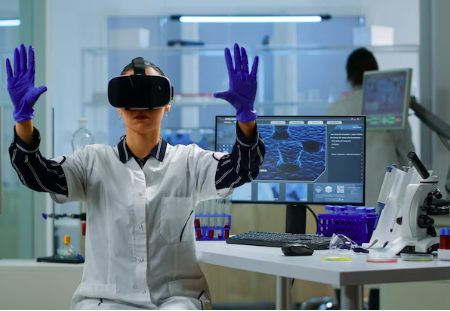Online labs and simulators have become essential tools for students and educators seeking hands-on experience in digital environments. In 2025, these interactive platforms offer realistic, safe, and engaging ways to explore science, engineering, programming, and more. Whether you’re conducting virtual chemistry experiments or simulating circuit designs, these resources provide valuable learning experiences at no cost. These platforms are particularly helpful for remote learners, homeschooling environments, or classrooms with limited access to physical lab equipment.
Top Free Online Labs and Simulators for Students:
- PhET Interactive Simulations – Developed by the University of Colorado Boulder, PhET offers over 160 free science and math simulations. Topics include forces and motion, waves, energy conservation, and chemical reactions. Simulations are available in multiple languages and optimized for use on computers and tablets, making them ideal for global access.
- LabXchange – Created by Harvard and supported by the Amgen Foundation, LabXchange provides modular content, virtual labs, and assessments focused on molecular biology, genetics, and health sciences. Users can follow curated learning pathways or build their own from a vast library of scientific videos and interactive activities.
- ChemCollective – A digital resource offering interactive virtual labs, tutorials, and scenario-based activities for chemistry learners. Students can mix solutions, measure properties, and simulate common laboratory procedures. It’s a go-to site for AP Chemistry prep and college-level instruction.
- Gizmos by ExploreLearning – While full access requires a subscription, Gizmos offers free trials and select simulations in areas such as math, biology, chemistry, physics, and earth science. It includes teacher guides, student exploration sheets, and alignment with state standards, making it useful for formal education settings.
- Tinkercad by Autodesk – This web-based tool lets students design 3D models, simulate electronic circuits, and program with microcontrollers like Arduino. The electronics section includes virtual breadboards, sensors, and LED simulations, making it a powerful tool for STEM learning and introductory engineering courses.
- Falstad Circuit Simulator – A browser-based simulator that visually represents current, voltage, and component behavior. Students can experiment with resistors, capacitors, transistors, and switches in real time. It’s great for introductory electrical engineering education and hobbyist learning.
- Algodoo – A fun, interactive physics simulator that turns drawing into dynamic experiments. Students can drop objects, build machines, and observe physical properties like friction, gravity, and acceleration. This visual sandbox environment is especially useful for middle school and early high school learners.
- NOVA Labs – Developed by PBS, NOVA Labs includes immersive learning experiences on topics like the RNA code, evolution, solar energy, and the science of cybersecurity. Each lab features real-world data sets, videos with scientists, and digital tools to explore STEM challenges.
- Go-Lab Project – A European initiative offering more than 600 online labs in multiple languages. Go-Lab supports inquiry-based learning, allowing students to create hypotheses, run virtual experiments, and reflect on outcomes. Its structured inquiry tools include digital notebooks, concept mappers, and data analyzers.
- MyPhysicsLab – This platform provides mathematical models and visual simulations of physics problems, including harmonic motion, pendulum swings, and rigid body dynamics. Students can adjust equations and observe results, which is particularly useful for developing conceptual understanding alongside calculus-based instruction.
- PraxiLabs – A 3D virtual lab focused on biology, chemistry, and physics experiments for university and high school levels. While PraxiLabs offers premium access, its free tier includes several experiments and immersive simulations, making it a valuable resource for introductory science courses.
- Molecular Workbench – Offers virtual labs and interactive simulations to visualize molecules and reactions. Developed by Concord Consortium, it’s an excellent tool for chemistry and biology students exploring molecular dynamics, bonding, and thermodynamics.
- Biology Simulations – A teacher-developed platform offering virtual labs and interactive tools on population biology, genetics, ecology, and evolution. Simulations include graphing components and built-in experimentation tools to help students make predictions and interpret data.
Tips for Using Online Labs and Simulators Effectively:
- Integrate with lessons: Use simulations to preview upcoming experiments or reinforce lecture concepts.
- Encourage exploration: Let students manipulate variables and test predictions freely.
- Assign guided tasks: Use accompanying worksheets or inquiry guides to direct learning.
- Incorporate assessments: Use quizzes or reflections post-lab to evaluate understanding.
- Combine with live instruction: Blend simulations with classroom discussion or video conferencing for collaborative exploration.
Benefits of Online Labs:
- Accessibility: Reach students in remote or under-resourced areas with reliable simulations.
- Safety: Eliminate risks associated with dangerous chemicals or equipment.
- Scalability: Offer unlimited attempts and repeatable practice opportunities.
- Visualization: Make abstract or microscopic processes easier to understand through animations.
- Self-paced learning: Enable students to work at their own speed with immediate feedback.
As technology evolves, online labs and simulators continue to enrich science and technical education by providing meaningful, interactive experiences. Whether supplementing in-person labs or serving as the primary mode of experimentation, these free tools empower learners to explore, question, and understand the world of science with curiosity and confidence.













